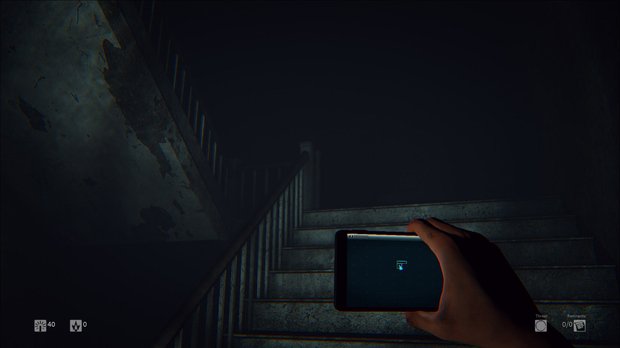GamesRadar+ Verdict
Pros
- +
Atmosphere is initially tense and moody
Cons
- -
Shallow scare tactics
- -
Tiring item hunt
- -
Short length
Why you can trust GamesRadar+
The first 20 minutes of Daylight are pure horror bliss. Hospital lights flicker and buzz as footsteps pound along in the distance; shrill screams echo through the halls, and unsettling visages of specters stare at you from afar. It’s genuinely spooky, making you wary of each step into its bleak world. But once that initial tension wears off, the game falls apart. Fear is replaced with frustration as Daylight settles into an unrelenting cycle of tedious item hunting and cheap jump scares, turning this would-be thriller into a corny carnival horror ride.
Daylight’s story adheres to horror cliches, offering little in the way of original or creepy ideas. It stars a woman named Sarah, who finds herself face down on the floor of an old, deserted hospital on Mid Island. Confused about how or why she's there, Sarah is given no choice but to press forward into typical horror genre environments, consisting of abandoned hospital corridors, a prison, and a dripping, labyrinthine sewer. While the environments succeed in creating ominous scenarios, they’re plagued by low-quality textures that detract from the ambiance.

Sarah’s only defense is a smartphone, which is your lifeline against the imposing dark. The handy device provides a source of portable light, and by some miracle of technology, it never runs out of power, so the fear of losing your ability to see never comes into question. The phone’s screen displays a two-dimensional map that updates as you progress through the game. The map is usually your closest friend in Daylight, but it isn’t without its faults. On the positive, it prevents you from spending all your time aimlessly wandering through the procedurally generated environments. But, as in real life, sprinting while holding a smartphone makes the screen tough to read, so navigation becomes overly difficult while on the run.

The phone also allows an unknown man to get in touch with Sarah, but his usefulness is limited. He offers some early game instructions, but, beyond that, he doesn’t offer much to enhance the game’s narrative. He enjoys speaking in riddles and offering moral lessons, but his constant interruptions break the mood, making him more distracting than useful. The story hints that he might share a special bond with Sarah, but disappointingly, his identity is never truly resolved by the time the credits roll. Honestly, by the game's end, I didn't have the energy to care, and the mystery hasn’t kept me up at night, either.

One of the more interesting aspects of Daylight is integration with Twitch streaming. People watching a Daylight stream can insert various commands which directly affect the game. For example, the streamer will hear a cat meowing through the speakers if members type “meow” into the chat. If “owl” is entered, the player will hear a distant hoot. “Light” temporarily shuts off the phone’s light, and “scream”--well, you get the idea. The developer has said that there are limitations to the commands to prevent spam abuse.
Daylight's procedural generation is meant to keep the game feeling unpredictable, but its poor implementation hampers both the environments and their ghostly inhabitants. Jump scares are the only trick in Daylight’s book, and they rapidly become too frequent and predictable. Ghosts act more like pranksters than angry spirits; one will send you running, but another appears at your back as soon as you turn to check if the coast is clear. Because spawn frequency increases as you progress, enemy encounters become nonstop annoyances that leave no room for tension. And you have to run, as their mere presence is enough to cause damage; stand still for too long, and you’re dead. Likewise, certain set pieces in the environments appear too frequently. In one playthrough, I ran past not just one, but three identical maternity wards while in the hospital. I had no idea Mid Island was struck by such an immense baby boom.
Progressing through Daylight’s four stages feels like less like a quest for survival, and more like a mundane paranormal scavenger hunt. Throughout the game you collect remnants: written notes and photographs that slowly reveal the atrocities committed at Mid Island throughout its shady history. While some remnants are hidden in plain sight, others are concealed in hiding spots that can only be seen by popping a glow-stick and scouring the environment. Searching for the allusive remnants while avoiding ghosts does make for some tense moments, but it ultimately becomes a monotonous, never-ending search for random items. Unfortunately, even if you're cool with uninteresting item hunts, a single playthrough takes a mere hour to complete.

Daylight is a mess. Its procedurally generated design doesn’t succeed in creating unpredictable scares, and the enemies that populate the spooky locales prove to be more annoying than frightening. The randomized levels offer a slightly different experience if you take a second trip through, but you’ll have seen just about everything Daylight has to offer after only a couple hours of play--which, regrettably, isn't much.

Daylight hits the right mood at first, but the creepy atmosphere is pushed aside for lame jump scares and hollow gameplay.
This game was reviewed on PC.
More info
| Genre | Survival Horror |
| Description | Try to survive in a deserted, and likely haunted, hotel with nothing but the light on your cell phone to save you |
| Platform | "PS4","PC" |
| US censor rating | "Mature","Mature" |
| UK censor rating | "","" |
| Release date | 1 January 1970 (US), 1 January 1970 (UK) |




